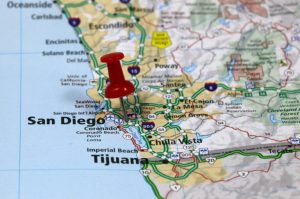Content

When it comes to periods of inflation, the use of last-in-first-out will outcome in the highest estimate of COGS among the three approaches, and the lowest net income. Additionally, you people can try fifo method calculator uses fifo method to find the ending inventory in the balance order same as that in which it was added to the company’s stock. Whereas, try lifo method calculator that uses the lifo method while performing ending inventory calculations on the most recent goods. In LIFO, it uses the latest inventory to be sold which gives the higher cost of inventory. These costs are higher than the firstly produced and acquired inventory. Higher costs may result in lower taxes with LIFO but it also shows the difference between the two LIFO and FIFO that FIFO represents accurate profits as the older inventory tells actual cost. Using FIFO could show the company’s natural profitability which if it may be high then it would attract the shareholders to invest in that company.

The national accounting standards organization, the FASB , in its GAAP allows both FIFO (First-in-first-out) and LIFO (last-in-first-out) accounting methods. The IFRS does not allow LIFO to be used, so if your Firm has international locations, you won’t be able to account it. With FIFO, we use the costing from our first transaction when we purchased 100 shirts at $10 each. The LIFO reserve https://www.bookstime.com/ is the difference between the FIFO and LIFO cost of inventory for accounting purposes. Last in, first out is a method used to account for inventory that records the most recently produced items as sold first. As a result, LIFO isn’t practical for many companies that sell perishable goods and doesn’t accurately reflect the logical production process of using the oldest inventory first.
Periodic Lifo
Once you’ve determined the cost of your oldest inventory, multiply that number by the total amount of inventory sold. If your business sells products, then you need a way to track your goods.
He has experience working with retailers in various industries including sporting goods, automotive parts, outdoor equipment, and more. His background is in e-commerce internet marketing and he has helped design the requirements for many features in Dynamic Inventory based on his expertise managing and marketing products online. Let’s compare the values of the inventory as of April when calculated using FIFO and LIFO.
However, the reduced profit or earnings means the company would benefit from a lower tax liability. FIFO, first in-first out, means the items that were bought first are the first items sold. Cost of sales is determined by the cost of the items purchased the earliest. Ending inventory is valued by the cost of items most recently purchased. A primary reason is that this approach appeals to common sense.
- The problem with LIFO is that it only works in an economy where the cost of things is constantly rising.
- In this formula, your beginning inventory is the dollar amount of product the company has at the onset of the accounting period.
- However, most companies use a formula to determine the total value of the product left over.
- If the costs of textbooks continue to increase, periodic LIFO will always result in the least amount of profit.
- More records have to be maintained and for a longer duration using the LIFO method.
- Ending inventory is an important formula for any business that sells goods.
Typically, prices of goods tend to rise over time, an implication that newly acquired goods are costlier than those acquired earlier. That’s the reason why FIFO would always report a value less than what moving average formula would report. On the other hand, LIFO would report a value that’s higher than FIFO. The FIFO is the first in-first out method used in accounting. The issue with taking inventory with this method is that if there is a gradual increase in the cost of goods, then more profit than it is being made is recorded.
What Is An Inventory?
Using FIFO to account for inventory assumes stock is continually sold and older units are moved out. The LIFO method focuses on newer inventory and assumes older items may remain in stock for a long time. LIFO, however, can minimize inventory write-downs once the fair market value of goods decreases. The LIFO method often requires more complex calculations at the end of a fiscal cycle.
As you want that fresh produce to go to market before it goes bad. But you also need to know how much money your stock is making. It’s not just important for your own bookkeeping – it’s important for tax purposes too.
The Small Business Guide To The Purchase Ordering Process
The marketable goods produced by a company usually dictate which method to choose. FIFO is typically used for perishable products like food and beverages or stock that may become obsolete or expire if it isn’t sold within a certain time. LIFO, however, is often used for products that aren’t affected by time spent in inventory or where the flow of product fits How to Calculate LIFO and FIFO the LIFO method. Businesses use FIFO to simplify accounting on a balance sheet. Under FIFO, the COGS can be valued closer to the current market price. Inventory costs are lower so companies can assume higher profits. LIFO ending inventory approach is more difficult to maintain than the FIFO as it can result in older inventory that never being shipped or sold.
Well, GAAP is acronym for “Generally Accepted Accounting Principles” that simply sets the standard for accounting procedures in the United States. It was specifically created so that all the businesses should have the same set of rules to follow. GAPP typically sets standards for a wide variety of topics from assets and liabilities to foreign currency, also the financial statement presentation.
How To Calculate Lifo & Fifo
Unlike FIFO, under LIFO the last items to enter inventory are sold first; items leave inventory in reverse order of their arrival. Conversely, during deflation, or periods of decreasing costs, the first items sold are more expensive than their later peers, increasing COGS and lowering profits. In general, both U.S. and international standards are moving away from LIFO. Many U.S.-based companies have switched to FIFO, and some companies still use LIFO within the United States as a form of inventory management but translate it to FIFO for tax reporting.

Hence, if want to determine the cost of 100 units, simply multiply the average per-unit cost with it. When you talk about the Average Cost inventory, this method involves calculating the weighted average of the inventory. To calculate total cost of goods sold, add the cost of each of the sales. The last units in were from January 26th, so we use those first, but we still need an additional 30. Adding cost of goods sold and ending inventory gives us $3,394.00 which ties back to goods available for sale. Using LIFO, we must look at the last units purchased and work our way up from the bottom. Start with the 50 units from January 26th and work up the list.
What Is Lifo And How Can It Be Used?
It can work well for retail firms who want to work with trends and quickly sell items that are in fashion now. Or for places like supermarkets who want to deal with the fluctuating prices of food. Changing one of these layers at any point can make the results of items sold increase or decrease. This isn’t a very natural method.– Most businesses tend not to leave the old stock lying dormant. Meaning it doesn’t have a natural lifecycle of product movement. Places like supermarkets tend to use LIFO due to fluctuation and rising costs.

Next, I enclose 3 snapshots of each method with the results required . Sometimes, you may receive goods but you still have to wait for other invoices to make the purchase order complete. We recommend that you record the value of the purchase order as it arrives and update it every time an invoice related to the order arrives. While these techniques are easy and provide an effortless way of calculating the value of your inventory, they don’t always give you the same value. In this case, the LIFO reserve will be the difference between the LIFO COGS and the FIFO COGS, which is 100,000.
FIFO inventory cost is calculated by determining the cost of the oldest stock and multiplying that amount by the number of items sold. This method of calculating ending inventory is based on the assumption that the oldest items bought for the production of goods were sold first. Using this method, you assume that the first item bought is the cost of the first product sold.
The FIFO (“First-In, First-Out”) method means that the cost of the oldest inventory of a firm is used for the COGS calculations . LIFO (“Last-In, First-Out”) refers to the cost of the most recent company’s inventory. The FIFO method generally results in more income for the company because it utilizes older inventory which is generally less costly. The LIFO method results in less income because it tends to use newer and more expensive inventory. First-in, first-out is a valuation method in which the assets produced or acquired first are sold, used, or disposed of first. The Last-In, First-Out method assumes that the last unit to arrive in inventory or more recent is sold first. LIFO is legal in the US, but since it is banned by the IFRS, a globally accepted accounting standard, global businesses or businesses that operate outside the US cannot legally use LIFO.
In addition, LIFO is not allowed under the IFRS, so you can’t use it if you’re doing business internationally. The LIFO method supposes that the most recent items purchased will be the first ones sold, so you’ll start by looking at the most recent inventory. This means the ending value of your inventory is determined by the cost of the oldest items. Choose a method from the FIFO LIFO calculator and click calculate. LIFO (Last-In, First-Out) is one method of inventory used to determine the cost of inventory for the cost of goods sold calculation.
Some companies seek to strike a balance between LIFO and FIFO by using the average cost method of inventory cost accounting. Under ACM, the weighted average cost of all available items in inventory for a given accounting period is used to calculate both COGS and ending inventory. FIFO stands for First In, First Out, which means the goods that are unsold are the ones that were most recently added to the inventory. Conversely, LIFO is Last In, First Out, which means goods most recently added to the inventory are sold first so the unsold goods are ones that were added to the inventory the earliest. LIFO accounting is not permitted by the IFRS standards so it is less popular. It does, however, allow the inventory valuation to be lower in inflationary times. When businesses calculate the cost of keeping an inventory, they can choose from several methods of bookkeeping.
If inventory costs are rising or are going to rise if you consider them, then go for the LIFO method as the high-cost items will be sold with rising costs. FIFO uses the First in First out method where the items made or purchased first are sold out which is why it is easy and convenient to follow and implement for companies and businesses. Businesses usually sell off the oldest items left in the inventory as they might become obsolete if not sold further.
Therefore to make them comparable, we convert LIFO Inventory into FIFO inventory by using this reserve. Once you understand what FIFO is and what it means for your business, it’s important to learn how it works. Ng offered an example of FIFO using real numbers to show the formula in action. Harold Averkamp has worked as a university accounting instructor, accountant, and consultant for more than 25 years.
